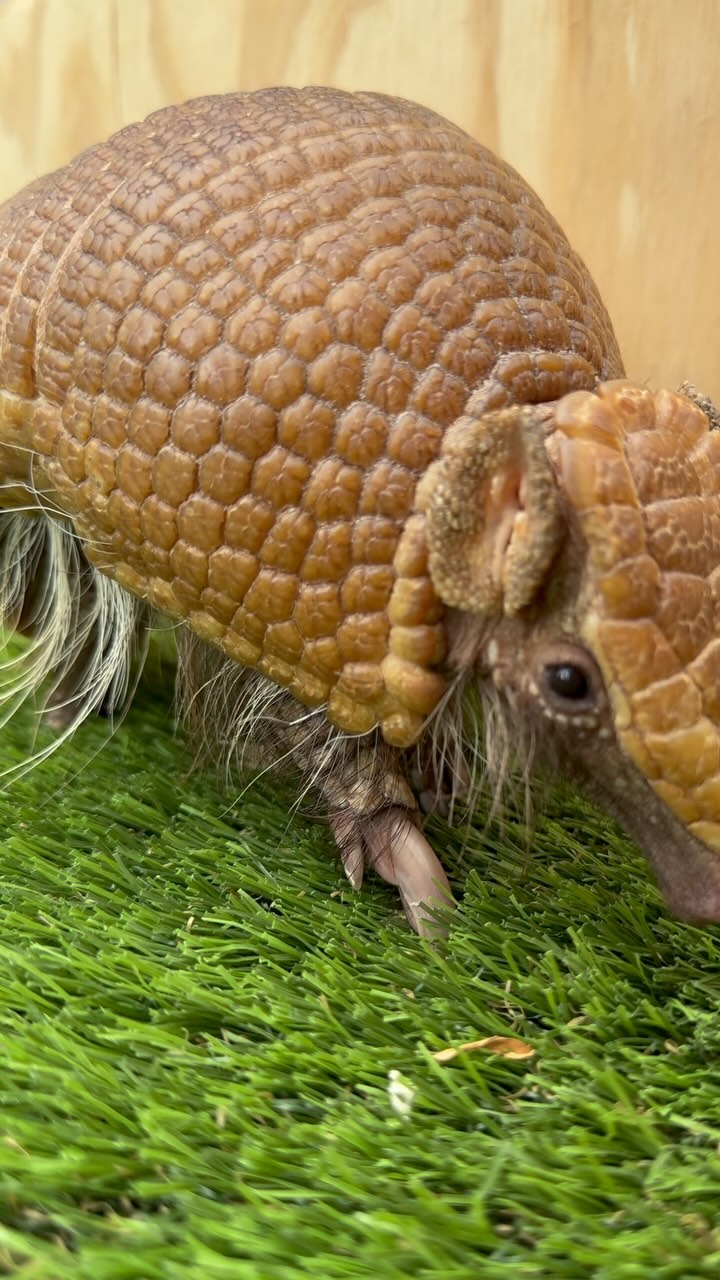- Emma, the three-banded armadillo, captivates with her unique anatomy and endearing features.
- The adaptation and survival tactics of the three-banded armadillo showcase evolutionary ingenuity.
- The ecological role and behavior of armadillos contribute significantly to their habitats.
- Zoo management and conservation strategies focus on protecting the three-banded armadillo.
- Educational outreach and public engagement play crucial roles in wildlife conservation.
Emma, a three-banded armadillo, is a fascinating creature that captures attention with her remarkable anatomy and endearing features. Found primarily in the dry forests and savannas of South America, the three-banded armadillo is renowned for its unique ability to roll into a perfect ball, an extraordinary defense mechanism that sets it apart from other armadillo species. This article explores the intricate details of Emma’s physiology, behavior, and the critical conservation efforts aimed at preserving her species.
Emma’s physical characteristics make her an engaging subject. Her armored shell, composed of bony plates called osteoderms, protects her from predators. This protective layer is divided into three distinct bands, allowing the armadillo to curl up tightly. Her “armored snoot” is another noteworthy feature, aiding in foraging by sniffing out insects and other food sources. Furthermore, her front claws are not only adorable but also serve as powerful tools for digging and burrowing, essential for her survival in the wild.
The three-banded armadillo’s evolutionary adaptations are truly remarkable. This species has developed a compact, sturdy body ideal for rolling into a defensive ball. Unlike other armadillos, Emma can close completely, encasing her vulnerable underside. This capability is crucial in deterring predators such as jaguars and large birds of prey. Her diet primarily consists of ants, termites, and other small invertebrates, making her a vital participant in controlling insect populations.
In terms of ecological contribution, armadillos play significant roles in their habitats. They participate in soil aeration through their digging actions, which benefits plant growth. By consuming insects, they help maintain ecological balance, impacting the food web dynamics. Their presence is a testament to a healthy, functioning ecosystem, and their adaptations signify endless natural ingenuity.
Zoo management and conservation efforts are pivotal for the survival of the three-banded armadillo. Captive breeding programs are essential to ensure genetic diversity and healthy populations. Emma’s presence in a zoo setting also provides invaluable research opportunities for scientists studying armadillo biology and behavior. Understanding the needs and behaviors of armadillos is critical for developing effective conservation strategies.
Conservation strategies focus on habitat preservation and public education. Protecting the natural environments where armadillos thrive is crucial, as habitat loss due to agriculture and deforestation poses a major threat. Raising awareness about Emma and her species fosters a connection between the public and wildlife, encouraging support for conservation initiatives. Educational outreach in zoos can lead to increased funding and legislative support for environmental protection efforts.
Public engagement plays a significant role in conservation. By showcasing Emma’s unique features and discussing her plight, zoos can inspire visitors to care about the conservation issues facing armadillos and other wildlife. Interactive exhibits and educational programs can further enhance public understanding and encourage actions that contribute to conservation goals.
In-depth research on armadillos like Emma continues to uncover insights into their complex behaviors and ecological importance. Studies on their role in ecosystems, as well as their physiological adaptations, provide valuable data for conservationists. Such information is critical in developing successful conservation initiatives that could mitigate threats like habitat destruction and climate change.
In summary, Emma, the three-banded armadillo, is an extraordinary animal with her charming appearance and unique evolutionary adaptations. Her existence highlights the importance of preserving biodiversity and maintaining healthy ecosystems. Zoo management and educational outreach efforts are vital components in ensuring the survival of her species. By appreciating Emma’s remarkable features and understanding the efforts behind her conservation, people can become more involved and proactive in wildlife stewardship. Through collective action and informed strategies, the future of the three-banded armadillo can be safeguarded for generations to come.
*****
Source Description
Emma, a three-banded armadillo, is adorable from every angle, but we implore you to check out her armored booty. And her armored snoot. And her little clickety clackety front claws that are both adorable and superb for digging!


